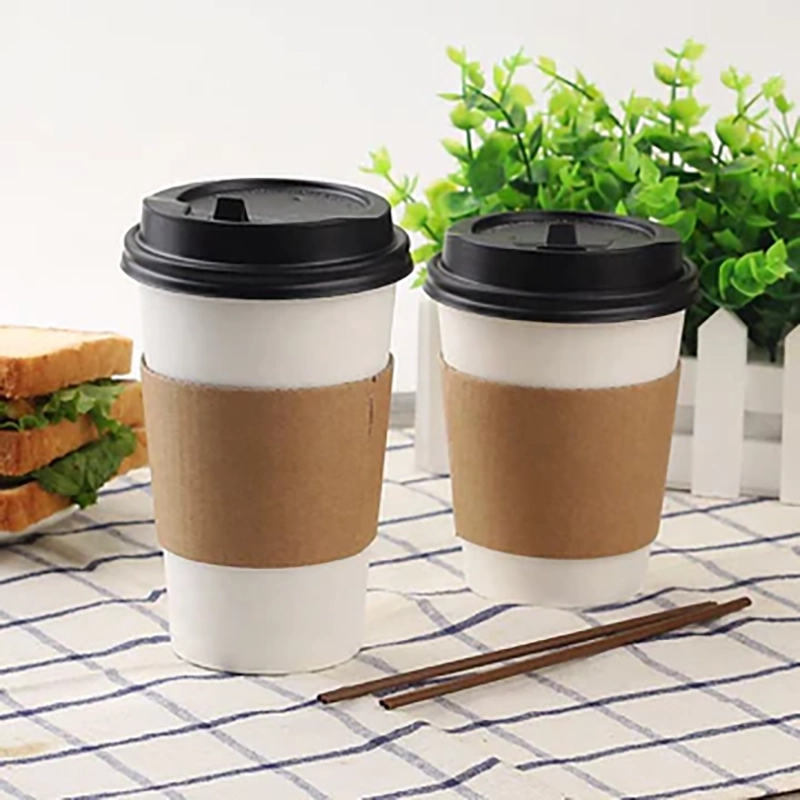Selecting Sustainable Cupstock for Businesses

What is sustainable cupstock? Sustainable cupstock is environmentally responsible material used in disposable cups and packaging, designed to minimize ecological impact.
Sustainable cupstock is crucial for any eco-conscious business looking to reduce environmental impact through responsible packaging choices.
Understanding the importance of sustainable cupstock
Sustainable cupstock refers to cup materials that are produced using environmentally friendly practices and materials. It takes into account the entire lifecycle of the cup, from raw material sourcing to disposal. Choosing eco-friendly cupstock is crucial because traditional cupstock materials, such as polystyrene and plastic, have a detrimental impact on the environment. These materials are derived from fossil fuels and are not biodegradable, leading to long-lasting pollution and waste.
Identifying the environmental impact of traditional cupstock
Traditional cupstock materials like polystyrene and plastic have significant environmental impacts. Polystyrene is derived from petroleum, a non-renewable resource, and its production releases harmful greenhouse gases into the atmosphere. Additionally, polystyrene cups take hundreds of years to decompose, contributing to landfill waste. Plastic cups, on the other hand, are made from petroleum-based plastics that do not biodegrade at all. They break down into smaller microplastics that can contaminate water sources and harm marine life.
The manufacturing process of traditional cupstock also has negative environmental consequences. The extraction and processing of raw materials require large amounts of energy and water, contributing to carbon emissions and water pollution. Furthermore, the disposal process for traditional cupstock often involves incineration or landfilling, both of which release harmful pollutants into the air or soil.
Exploring the benefits of sustainable cupstock for your business
| Benefits of Sustainable Cupstock | Description |
|---|---|
| Environmental Impact | Reduces waste and carbon footprint |
| Cost Savings | Lower production costs and potential tax incentives |
| Brand Image | Enhances reputation and attracts eco-conscious customers |
| Regulatory Compliance | Meets government regulations and avoids fines |
| Customer Loyalty | Builds customer loyalty and increases repeat business |
Choosing compostable cupstock offers numerous benefits for businesses. Firstly, it demonstrates a commitment to environmental responsibility, which can enhance a company’s reputation and attract environmentally conscious customers. recyclable cupstock also has a positive impact on the environment by reducing carbon emissions, conserving natural resources, and minimizing waste.
Moreover, renewable cupstock can lead to potential cost savings for businesses. While the upfront cost of sustainable cupstock may be slightly higher than traditional options, the long-term savings can be significant. For example, some sustainable cupstock materials are made from renewable resources that are more cost-effective in the long run. Additionally, businesses can reduce waste management costs by choosing materials that are easily recyclable or compostable.
Considering the cost-effectiveness of sustainable cupstock
When comparing the cost of sustainable cupstock to traditional options, it is important to consider the long-term financial benefits. While sustainable cupstock may have a slightly higher upfront cost, businesses can save money in the long run through reduced waste management costs and potential energy savings. Additionally, some sustainable cupstock materials are made from renewable resources that may become more cost-effective as their production scales up.
It is also worth noting that the cost of traditional cupstock may increase in the future due to stricter regulations on single-use plastics and increased demand for sustainable alternatives. By investing in sustainable cupstock now, businesses can future-proof their operations and avoid potential price hikes associated with traditional options.
Evaluating the durability and performance of sustainable cupstock
One concern businesses may have when considering sustainable cupstock is its durability and performance compared to traditional options. However, sustainable cupstock materials have come a long way in terms of quality and functionality. Many sustainable cupstock options are designed to be just as durable and functional as their traditional counterparts.
For example, some sustainable cupstock materials are lined with plant-based bioplastics that provide excellent insulation and prevent leaks. These materials can withstand hot and cold temperatures without compromising their structural integrity. Additionally, advancements in sustainable cupstock technology have led to the development of materials that are resistant to grease and moisture, making them suitable for a wide range of food and beverage applications.
Examining the availability of sustainable cupstock in your area
Finding sustainable cupstock in your area may require some research and effort, but it is becoming increasingly accessible as demand for sustainable packaging grows. Start by reaching out to local packaging suppliers and distributors to inquire about their sustainable cupstock options. Many suppliers now offer a range of eco-friendly alternatives, including cups made from recycled paper or biodegradable materials.
However, it is important to note that the availability of sustainable cupstock may vary depending on your location. In some areas, sustainable cupstock options may be limited or more expensive due to logistical challenges or lower demand. In such cases, businesses can consider partnering with suppliers who specialize in sustainable packaging or explore online options that offer nationwide shipping.
Researching the certifications and standards for sustainable cupstock
When choosing sustainable cupstock, it is essential to research and verify the certifications and standards associated with the materials. Certifications such as Forest Stewardship Council (FSC) and Sustainable Forestry Initiative (SFI) ensure that the cupstock materials are sourced from responsibly managed forests. Additionally, certifications like the Biodegradable Products Institute (BPI) or the Compostable Products Certification mark (CMA) guarantee that the cupstock materials are compostable under specific conditions.
To research these certifications, businesses can visit the respective certification organization’s website or consult with packaging experts who are knowledgeable about sustainable packaging standards. It is crucial to ensure that the cupstock materials meet recognized industry standards to avoid greenwashing or misleading claims.
Comparing the different types of sustainable cupstock available
There are various types of sustainable cupstock available, each with its own set of advantages and disadvantages. One popular option is paper-based cupstock, which is often made from recycled paper fibers or sustainably sourced virgin paper. Paper cups can be easily recycled and have a lower environmental impact compared to plastic or polystyrene cups. However, it is important to choose paper cups that are lined with compostable or recyclable materials to ensure their sustainability.
Another option is biodegradable cupstock, which is made from plant-based materials like cornstarch or sugarcane. These cups are designed to break down naturally in composting facilities, reducing their impact on the environment. However, it is important to note that biodegradable cups may not break down in regular landfill conditions and require specific composting facilities to decompose properly.
Consulting with experts in sustainable packaging
Consulting with experts in sustainable packaging can provide businesses with valuable insights and guidance throughout the transition process. Packaging experts can help businesses identify the most suitable sustainable cupstock options based on their specific needs and requirements. They can also provide information on the latest advancements in sustainable packaging technology and help businesses navigate the certification and verification processes.
To find experts in sustainable packaging, businesses can reach out to industry associations, attend trade shows or conferences focused on sustainability, or seek recommendations from other businesses that have successfully implemented sustainable packaging strategies. Working with experts can streamline the decision-making process and ensure that businesses make informed choices that align with their sustainability goals.
Developing a sustainable packaging strategy for your business
Developing a sustainable packaging strategy is crucial for businesses looking to make the switch to sustainable cupstock. A comprehensive strategy should consider various factors, including material sourcing, manufacturing processes, waste management, and customer education. It should also align with the business’s overall sustainability goals and values.
To develop a sustainable packaging strategy, businesses should start by conducting a thorough assessment of their current packaging practices and identifying areas for improvement. This assessment should include an analysis of the environmental impact of existing packaging materials and processes. Based on the assessment, businesses can set specific goals and targets for reducing their environmental footprint and outline actionable steps to achieve them.
Communicating your commitment to sustainability to customers and stakeholders
Effectively communicating a business’s commitment to sustainability is essential for building trust and loyalty among customers and stakeholders. Businesses should clearly articulate their sustainable packaging initiatives, including the switch to sustainable cupstock, through various communication channels. This can include updating packaging labels or branding to highlight eco-friendly features, sharing sustainability stories on social media platforms, or incorporating sustainability messaging into marketing campaigns.
Transparency is key when communicating sustainability efforts. Businesses should provide accurate and easily accessible information about their sustainable cupstock choices, including certifications and standards. Additionally, engaging with customers through educational content or interactive campaigns can help raise awareness about the importance of sustainable packaging and encourage behavior change.
In conclusion, choosing sustainable cupstock is crucial for businesses looking to reduce their environmental impact and demonstrate their commitment to sustainability. Traditional cupstock materials have significant negative consequences for the environment, from raw material extraction to disposal. Sustainable cupstock offers numerous benefits, including a positive impact on the environment and potential cost savings for businesses in the long run.
By evaluating the availability of sustainable cupstock in their area, researching certifications and standards, and consulting with experts in sustainable packaging, businesses can make informed decisions that align with their sustainability goals. Developing a comprehensive sustainable packaging strategy and effectively communicating this commitment to customers and stakeholders will further enhance a business’s reputation and contribute to a more sustainable future.
It is time for businesses to make the switch to sustainable cupstock and lead the way towards a greener and more environmentally conscious future.
FAQs
What is cupstock?
Cupstock is a type of paperboard that is specifically designed for use in the production of paper cups and other food packaging products.
Why is it important to choose sustainable cupstock?
Choosing sustainable cupstock is important because it helps to reduce the environmental impact of your business. Sustainable cupstock is made from renewable resources and is recyclable, which helps to reduce waste and conserve natural resources.
What are some factors to consider when choosing sustainable cupstock?
When choosing sustainable cupstock, it is important to consider factors such as the source of the materials used to make the cupstock, the manufacturing process used to produce the cupstock, and the recyclability of the cupstock.
What are some examples of sustainable cupstock materials?
Some examples of sustainable cupstock materials include paperboard made from recycled paper, paperboard made from sustainably harvested wood fibers, and paperboard made from alternative fibers such as bamboo or sugarcane.
How can I ensure that the cupstock I choose is sustainable?
To ensure that the cupstock you choose is sustainable, look for certifications such as the Forest Stewardship Council (FSC) or the Sustainable Forestry Initiative (SFI). You can also ask your cupstock supplier for information about the source of the materials used to make the cupstock and the manufacturing process used to produce it.


